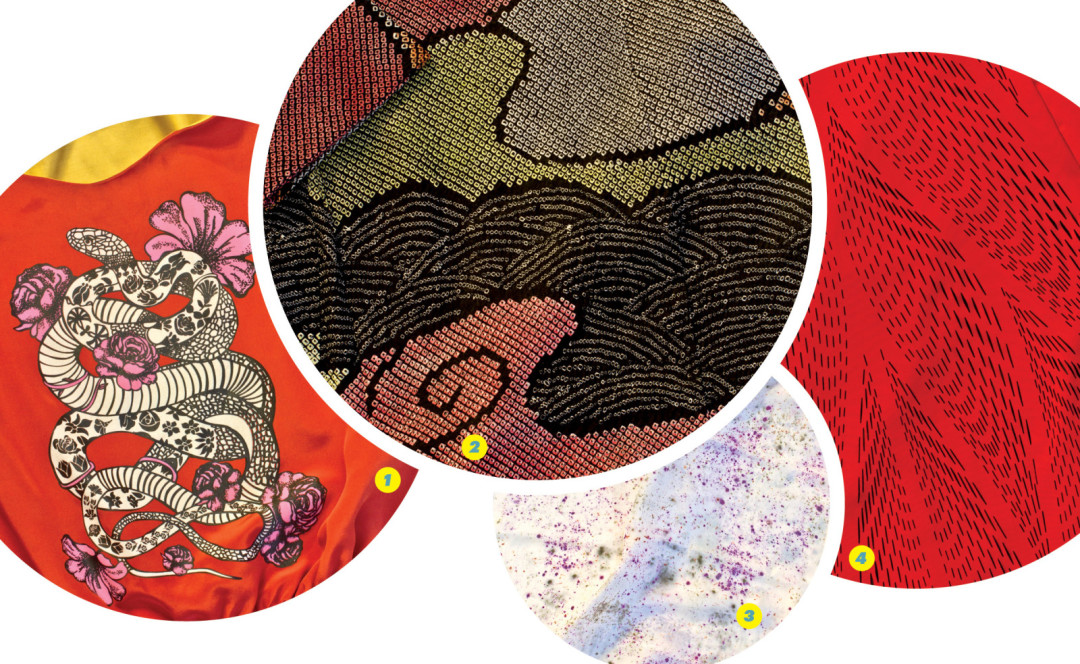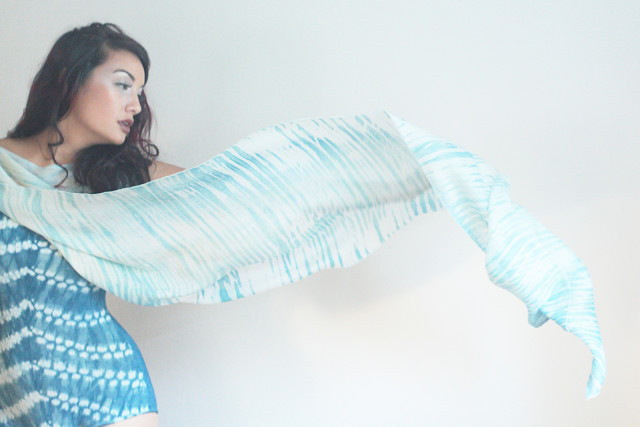Portland's Textile Trailblazers

Image: Mike Novak
Like choreographers or cinematographers, textile designers are unsung heroes. These print-masters work deep in the fashion industry’s engine room—they are the reason you remember that psychedelic Pucci scarf, that mod Orla Kiely bag, or Pendleton’s iconic jacquard weaves. And in Portland, the profession’s ranks are growing, with local designers adopting wide-ranging methods and materials, from powdered insects to precision lasers. Meet four local fabric innovators weaving their way to fashion prominence.
1. Kate Troyer
As a “surface designer,” Kate Troyer uses her fine art background to create bold, organic patterns that she applies to fabric with a large-scale, repetitive screen-printing process. “I always start with hand-rendered imagery, ranging from watercolor paintings to ink drawings,” she says. “I try to retain the gestural qualities within the original sketch.” Troyer’s skill has translated to a line of pillows for Schoolhouse Electric, custom wallpaper for Paper Paint Press, and silk fabrics for local fashion studio Garnish. Last year, Troyer teamed up with local apparel designer Shelby Morgan on the women’s wear line Veil & Valor, in which Troyer crafts prints customized to the silhouettes Morgan creates.
2. Kiriko
Since Kiriko’s 2012 launch, Dawn Yanagihara and Katsu Tanaka’s Japanese-inspired fabrics have soared to national acclaim. Kiriko’s offerings range from patterned pocket squares to patchwork blankets and vibrant scarves, all crafted with centuries-old Japanese dyeing methods. This spring Kiriko teamed up with Madewell: the collaboration’s patched denim apparel showcases an array of ancient print styles, including ai-some, in which thread fibers are dyed with indigo before being woven into a print. Yanagihara credits tradition for Kiriko’s success. “Much of our inspiration comes from our vintage textiles,” she says. “They represent a period when people really dedicated their lives to a single craft. We do our best to share the story behind these processes with the pieces we create.”
3. R.A.W. Textiles
In 2009, Rio Wrenn hopped into the Portland fashion scene with lively lingerie noteworthy for its mysterious, amber-hued patterns. The striking imagery, it turned out, came from rust—Wrenn had rusted objects like washers and bolts onto the fabric to create sunburst abstractions. Wrenn expanded her collection to include scarves in one-of-a-kind patterns, made with a variety of methods, including dip-dyeing and silk-screening. She also employs raw materials from her garden, like hollyhock, rose trees, and mata root, as well as beetle-based dyes like cochineal. Beyond her own R.A.W. line, Wrenn hopes to “infiltrate” (as she puts it) designer collections. To that end, she recently signed with New York sourcing agency Le Souk to represent her fabrics to national designers.
4. Emit
At his three-year-old brand Emit, owner Ben Hermel perforates commercially available fabrics with a laser cutter to create intricate shapes while simultaneously fusing edges to prevent fraying. The results are stunning: simple shift dresses with a layer of intricate geometric designs overlaid atop a contrasting pop of color. “Almost anything can trigger a design,” Hermel says, “from the geometry of an airport runway to the energy of a raw sketch, or the angles of an office building.” Fresh off showcasing a look in Portland Art Museum’s Object Stories exhibit, the tech-savvy Hermel has his sights set on finding a local apparel designer to partner with for the future, he says, “as we still have a lot to learn about the craft.”

